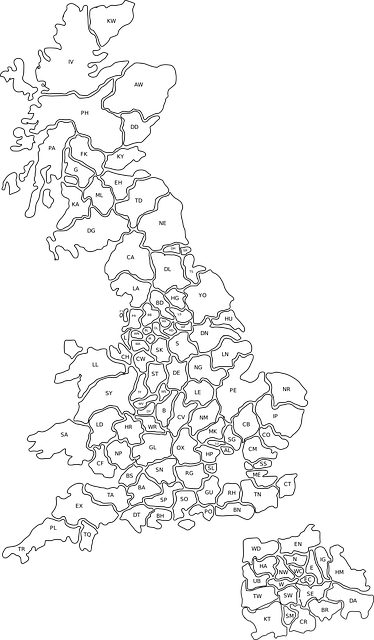The Longest River in the UK: A Complete Guide to the Mighty River Severn
Introduction
The United Kingdom is crisscrossed by an intricate network of rivers that have shaped its landscapes, history, and culture. Among these waterways, the River Severn stands as the longest in the UK, stretching an impressive 220 miles (354 km) from its source in the Welsh mountains to its vast estuary where it meets the Bristol Channel.
This in-depth exploration will cover every aspect of the River Severn, including:
- Geographical journey – From its source to the sea
- Historical significance – Ancient myths, Roman influence, and industrial importance
- Ecology and wildlife – The diverse species that depend on the river
- Major settlements – Cities and towns along its banks
- Economic and environmental roles – Flood risks, energy potential, and conservation
- Comparison with other major UK rivers – How the Severn measures up
By the end of this guide, you’ll have a comprehensive understanding of why the River Severn is not just the longest river in the UK but also one of the most fascinating.
The Geography of the River Severn
Source: The Birth of a River
The River Severn begins its journey high in the Cambrian Mountains of Wales, near Plynlimon (Pumlumon in Welsh). This remote, peat-covered plateau is also the source of two other significant rivers—the Wye and the Rheidol.
- Elevation: Approximately 610 meters (2,000 feet) above sea level
- Initial flow: A small stream that gradually widens as it descends
Course: From Wales to the Bristol Channel
The Severn’s path takes it through some of the most picturesque and historically rich regions of the UK:
- Upper Severn (Wales to Shrewsbury)
- Flows through Powys, passing Llanidloes, the first town on its banks.
- Enters England near Shropshire, meandering through Welshpool and Montgomery.
- Reaches Shrewsbury, a medieval town with a looping bend that almost encircles the historic center.
- Middle Severn (Shrewsbury to Worcester)
- Passes Ironbridge Gorge, the birthplace of the Industrial Revolution.
- Flows by Bridgnorth, known for its cliff-side railway.
- Reaches Worcester, famous for its cathedral and the Worcestershire sauce industry.
- Lower Severn (Worcester to the Estuary)
- Joins the River Avon at Tewkesbury, a historic market town.
- Passes Gloucester, home to a stunning cathedral and historic docks.
- Widens into the Severn Estuary, one of the most dramatic tidal zones in the world.
Key Tributaries
The Severn is fed by several major rivers, including:
| Tributary | Joins at | Significance |
| River Vyrnwy | Near Melverley | Important for water supply (Lake Vyrnwy reservoir) |
| River Teme | Worcester | Known for salmon fishing |
| River Avon | Tewkesbury | Links to Stratford-upon-Avon and Bath |
The Severn Estuary and Tidal Bore
One of the most extraordinary natural phenomena associated with the Severn is its tidal bore—a wave caused by the incoming tide funneling up the narrowing estuary.
- Height: Can reach 2 meters (6.6 feet) in some areas
- Speed: Travels at up to 13 mph (21 km/h)
- Best viewing spots: Minsterworth and Newnham in Gloucestershire
The Severn Estuary also has one of the highest tidal ranges in the world (up to 14 meters/46 feet), making it a prime location for tidal energy research.
Historical and Cultural Significance
Ancient and Roman Influence
- Celtic Mythology: The river is named after Sabrina (Hafren), a legendary nymph who drowned in its waters.
- Roman Settlements: The Romans built key towns like Glevum (Gloucester) and Viroconium (Wroxeter) along the Severn for trade and defense.
Medieval and Tudor Era
- Strategic Border: The Severn acted as a natural boundary between Welsh and English territories.
- Monastic Influence: Monasteries in Tewkesbury and Worcester used the river for transport and trade.
Industrial Revolution Impact
- Ironbridge Gorge: The world’s first iron bridge (1779) was built over the Severn.
- Canal Networks: The Staffordshire & Worcestershire Canal linked the Severn to the Midlands.
Modern Cultural References
- Literature: Featured in works by J.R.R. Tolkien (inspired the Brandywine River in Lord of the Rings).
- Film & TV: Scenes from Doctor Who and Sherlock have been filmed along the river.
Wildlife and Ecology
Flora and Fauna
The Severn supports a rich variety of species:
| Category | Examples |
| Fish | Atlantic salmon, brown trout, twaite shad |
| Birds | Kingfishers, herons, migratory geese |
| Mammals | Otters, water voles, badgers |
Environmental Challenges
- Pollution: Agricultural runoff and urban waste affect water quality.
- Flooding: Increasing due to climate change (e.g., 2007 floods devastated Gloucestershire).
- Conservation Efforts: The Severn Rivers Trust works on habitat restoration.
Major Towns and Cities Along the Severn
| Location | Key Features |
| Shrewsbury | Medieval town with a castle and Tudor architecture |
| Worcester | Famous cathedral, porcelain, and cricket |
| Gloucester | Historic docks and the Gloucester-Sharpness Canal |
| Bristol (estuary) | Major port city with maritime heritage |
Economic and Environmental Importance
Modern Uses
- Transport: Though less used today, it was once a key trade route.
- Tourism: Popular for boating, fishing, and walking trails.
- Energy: Tidal power projects are being explored.
Flood Management
- Barriers: The Thames Barrier-inspired Severn Barrier proposal.
- Natural Defenses: Wetland restoration to absorb floodwaters.
Comparison with Other Major UK Rivers
| River | Length | Key Feature |
| Severn | 220 miles | Longest, tidal bore |
| Thames | 215 miles | Flows through London |
| Trent | 185 miles | Major Midlands river |
Conclusion
The River Severn is more than just the UK’s longest river—it’s a lifeline for wildlife, a witness to history, and a vital resource for communities. Whether you’re drawn to its natural wonders, historical tales, or modern-day significance, the Severn offers endless fascination.
Would you like to visit the Severn or witness its tidal bore? Share your thoughts in the comments!

